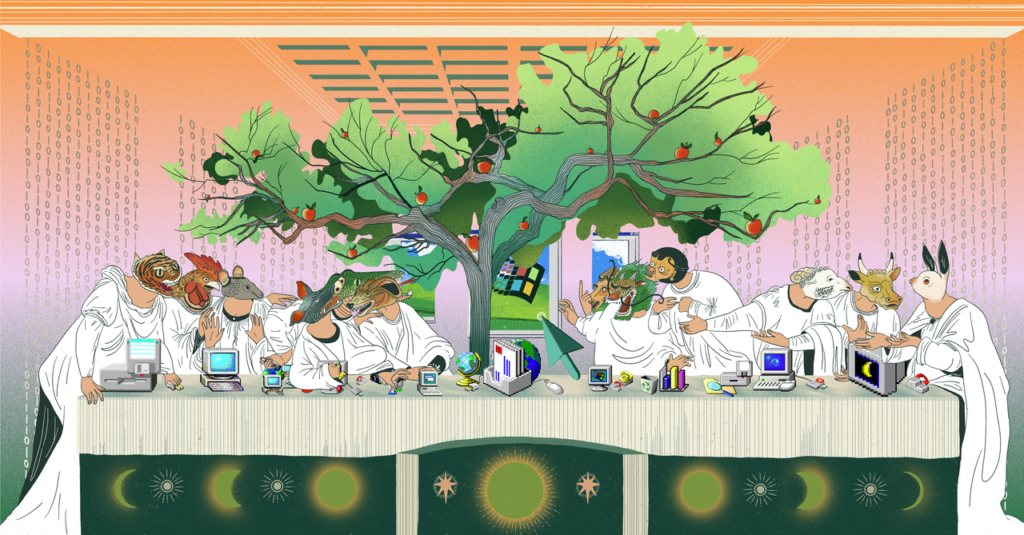Enabling learners to apply knowledge in the real world

There’s plenty of praise for the wonders of Generative AI in creating efficiencies on repetitive tasks in education and streamlining the work of assessment whilst reducing the need for expertise. not least of all from the English Minister of Education. But of course as Audrey Waters has reminded us all, attempts to build “teaching machine” by Pressey, Skinner et al date back to the 1930s onward. And its fairly obvious that it is not concern for the overworked teachers which is driving such developments, but the hope that automation will reduce the need for so many skilled teachers.
But within that development there seems to be an assumption that education will just continue as normal albeit with intelligent machines and increasing efficiency. Yet the arrival of AI is increasingly raising question about the purpose of education. Writing in University Affairs Loleen Berdahl, asks AI is transforming university teaching, but are we ready for it?
As Stephen Downes says “The questions here are what’s interesting and significant: “Are faculty going to be leaders – or, barring that, engaged participants – in determining how AI shapes the future of higher education? Or will they leave this to those outside the sector?” Also, “AI is already changing how we teach… But will it also change what we teach?”
But I would argue that in Vocational Education and Training, AI is already changing what we teach but will it also change how we teach. Sarah Iono has written an essay on The Evolving Purpose of Education, published on LinkedIn. She cites Olli-Pekka Heinonen, Director General of the International Baccalaureate, who she says “argues, the era of human capital theory is over. In a world where we must prioritise not only individual success but also the wellbeing of communities and the planet, education must evolve.” He sees education as a foundation for building thriving societies.
Heinonen calls for a profound reimagining of how we prepare learners for an evolving world. Central to this vision is a shift from prioritizing rote content mastery to fostering essential competencies—critical thinking, creativity, systems-oriented problem-solving, and collaborative skills. While foundational knowledge remains a cornerstone, the emphasis lies in empowering students to apply this knowledge innovatively and purposefully. Education must cultivate agency, encouraging learners to view themselves not as passive recipients of information but as active contributors to their communities and global challenges.
Rather than displacing educators, technology should enhance their capacity to personalize learning and nurture creativity. This transformation hinges on recognizing education as a deeply relational endeavor, where trust, empathy, and human connection remain irreplaceable, even as digital tools reshape classrooms.
Ultimately, the essay envisions education systems rooted in collective flourishing. Schools could evolve into community hubs where families, students, and educators collaborate on local and global issues. Curricula would intertwine academic rigor with themes like environmental stewardship, ethical reasoning, and global citizenship. Success would be measured not by individual accolades but by shared growth and societal contribution. At its core, this future demands a balance: embracing innovation while safeguarding the human relationships that make learning meaningful.
Critical thinking, creativity, systems-oriented problem-solving, and collaborative skills sound to me like the bedrock of future Vocational Education and Training. And VET is focused on enabling learners to apply knowledge in the real world. VET is also predominantly based within communities. As such VET is well placed to embrace such a future.
About the Image
This illustration draws inspiration from Leonardo da Vinci’s masterpiece The Last Supper. It depicts a grand discussion about AI. Instead of the twelve apostles, I replaced them with the twelve Chinese zodiac animals. In Chinese culture, each zodiac symbolizes distinct personality traits. Around the table, they discuss AI, each expressing their views with different attitudes, which you can observe through their facial expressions. The table is draped with a cloth symbolizing the passage of time, and it’s set with computer-related objects. On the wall behind them is a mural made of binary code. In the background, there’s an apple tree symbolizing wisdom, with its intertwining branches representing neural networks. The apples, as the fruits of wisdom, are not on the tree but stem from the discussions of the twelve zodiacs. Behind the tree is a Windows 98 System window, opening to the outside world. Through this piece, I explore the history of AI and computer development. Using the twelve zodiacs, I emphasize the diversity of voices in this conversation. I hope more people will join in shaping the diverse narratives of AI history in the future.

